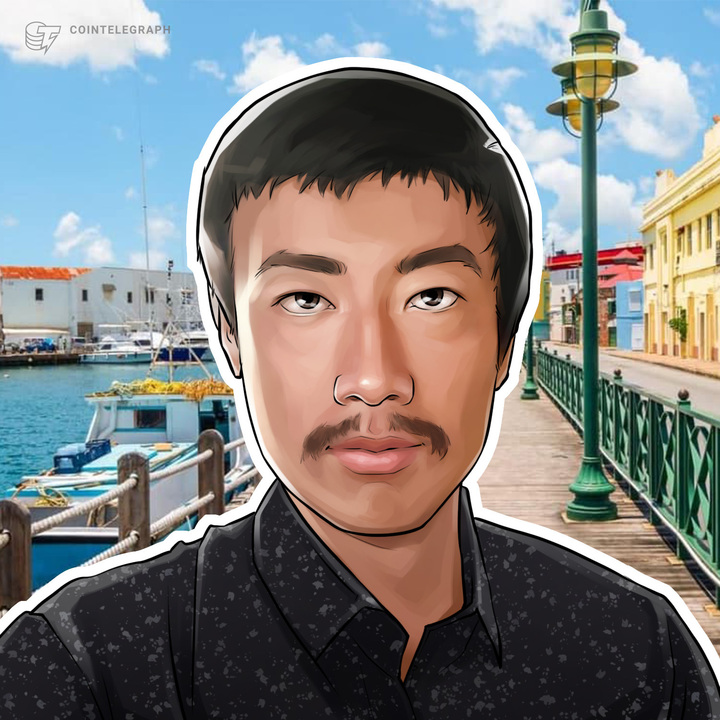China Telco’s crypto SIM, Korean exchanges in turmoil… and more – Cointelegraph Magazine

Our weekly roundup of news from East Asia curates the industry’s most important developments.
China blockchain SIM card
Conflux Network says it is working with the second-largest telecommunications provider in China to develop a blockchain SIM card that will serve as a secure place to store digital private keys and nonfungible tokens.
Conflux announced its partnership with China Telecom on Feb. 15, saying the BSIM has moved past the research and development phase. The card will have up to “10-20 times storage space” compared to regular SIM cards, thereby ensuring optimized access to decentralized applications and digital communities.
The first pilot program for the BSIM card is expected to launch in Hong Kong later this year. Conflux is a layer-1 blockchain operating on a hybrid proof-of-work and proof-of-stake consensus and claims it’s the “only regulatory-compliant public blockchain in China.” Its parent entity, the Shanghai Tree-Graph Blockchain Research Institute, has received approval from the Shanghai Municipal People’s Government to operate as a blockchain entity.
Korean crypto scandals
Korean crypto exchanges and blockchain entities endured a tough week after a series of misconduct allegations shook the industry. On Feb. 13, investigations carried out by local news outlet IT Chosun alleged that Gopax, a top five crypto exchange in South Korea, charged anywhere between tens of thousands to hundreds of millions in Korean Won (KRW) for token listing fees.
Crypto exchanges in South Korea typically advertise no-fee listings, but according to the report, some firms charge “operating expenses and technical costs” and pass them to the token’s project developers as part of the listing process.
While the country’s Financial Services Commission states that exchanges will be “severely punished” for demanding listing fees, other legal experts say that charging “operating expenses” for listing tokens would not violate such guidelines.
Meanwhile, news outlet Seoul Broadcasting System on Feb. 14 confirmed that South Korean actress Park Min Young is under investigation for her role in the troubled cryptocurrency exchange Bithumb.
Prosecutors say that Park’s name was used in the transaction of convertible bonds issued by Bithumb affiliates and that large profits occurred. Previously, Kang Jong-Hyun, the chairman of Bithumb and Park’s ex-boyfriend, was arrested on Feb. 2 on charges of fraud and embezzlement related to activities at the exchange.

The next day, South Korean prosecutors investigating the collapse of decentralized finance protocol Terra Luna (LUNC) said they had arrested “Mr. A,” the CEO of e-commerce platform Tmon.
According to media outlet Donga, Mr. A is accused of accepting an improper request from a co-founder of Terraform Labs to introduce LUNC as a simple payment method and publicize it extensively LUNC tokens. It is alleged that Mr. A made billions of South Korean won by cashing out the LUNC tokens. Do Kwon, co-founder and CEO of Terraform Labs, is currently wanted by authorities over his alleged role in the collapse of the Terra Luna ecosystem and is reportedly hiding in Serbia.
Square Enix uses Polygon
On Feb. 15, Japanese video game developer Square Enix announced that it would partner with Polygon Labs to launch its interactive Web3 digital collectibles game Symbiogenesis. The project will be set on a mysterious floating continent where players can unlock numerous engaging stories about the world and its inhabitants by holding or trading NFTs.
The digital collectibles, numbering 10,000 in total, can also be earned by completing various missions. Symbiogenesis offers players multiple endings. However, only three players, meeting specific conditions, will be chosen to participate in the final “World Mission.” These special three will decide the ending of the story, the fate of the world, and everyone in it.

Symbiogenesis will also comprise a plethora of utility items initially issued off-chain, which players can opt to trade on-chain via Polygon. The game is currently scheduled to launch this spring. Naoyuki Tamate, Symbiogenesis’ game producer said:
Symbiogenesis was designed from the ground up on the blockchain and is designed to provide an exceptional experience for both community building and trading. Square Enix opted to tap into Polygon’s high transaction speeds, low gas fees, and overall user-friendliness to deliver this unique experience to Web3 fans.”
Square Enix is known as the developer of the popular Final Fantasy franchise. Last May, Cointelegraph reported that the firm sold its other popular franchise, Tomb Raider, to use the proceeds to explore blockchain gaming. Development for Symbiogenesis began last November.
Hong Kong’s $102 million digital green bond sale
The government of Hong Kong has successfully issued $800 million Hong Kong dollars ($102 million) in digital green bonds through its partnership with the Bank of China, Credit Agricole, Goldman Sachs and HSBC, according to a press release dated Feb. 16. Thus far, Moody’s and S&P Global Ratings have rated the bonds as A-1+ / F1+, which is at parity with similar short-term debt instruments in the Special Administrative Region of China.
The city used Goldman Sachs’ distributed ledger technology to record beneficial interests in the tokenized green notes. Based on the design, green bondholders will clearly know information such as the progress and daily reduction in carbon emissions of the projects financed. City officials say the use of blockchain technology offers faster coupon payments and bypasses clearing systems, thereby reducing settlement times. The tokenized bonds have a coupon rate of 4.05% per annum and maturity date of 365 days.
Blur token airdrop
On Feb. 14, NFT marketplace Blur.io, which has grown to rival OpenSea in trading volume in recent months, began the third wave of its much anticipated token airdrop. Since its launch last October, users who traded Ethereum NFTs on Blur or on rival platforms were eligible for “care packages” containing BLUR token rewards that are airdropped in waves. According to data from Dune, the third wave was the biggest BLUR airdrop to date, “around 1-2x the size of Airdrop 2.”
However, the airdrop appeared to have caused unintended issues for OKX customers. The cryptocurrency exchange on Feb. 15 announced that “the high volume of deposits” arising from the airdrop triggered platform risk controls and led to a delay in token transfers for some users, “a partly missed window of opportunity for trading.”
Despite quickly resolving the issue, OKX said that a small portion of users was nevertheless affected by the delay and will offer compensation by airdropping its native token OKB to eligible recipients within three business days. BLUR traded for as high as $5.69 per token at the time of the airdrop but quickly collapsed to less than $1.00.
















